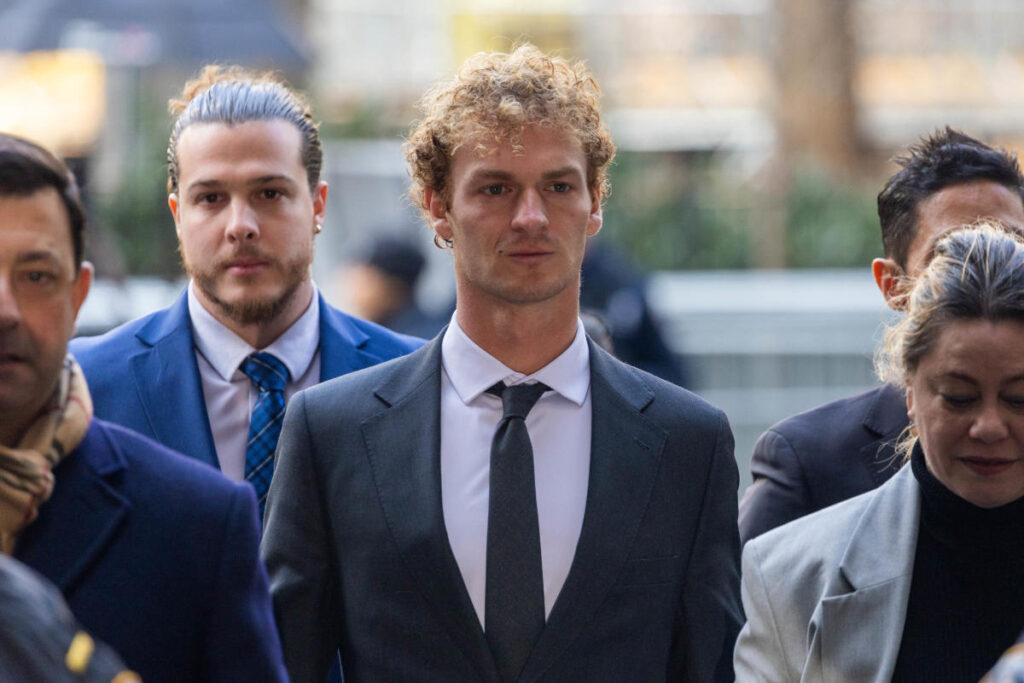In a significant development within the Daniel Penny trial, a judge dismissed the second-degree manslaughter charge after the jury announced twice that they could not reach a unanimous decision on it. This ruling reduces the potential penalty for Penny, who is facing charges in connection with the death of Jordan Neely during a confrontation in a subway. Initially, if convicted of manslaughter, Penny could have faced up to 15 years in prison; however, with the dismissal of that charge, the jury will now only deliberate on the lesser charge of criminally negligent homicide, which carries a maximum sentence of four years.
The jury’s deliberations have been intense and lengthy, having deliberated for approximately 20 hours since they began on Tuesday. During that time, they communicated with the judge several times, requesting relevant evidence such as cellphone videos and police bodycam footage of the incident, as well as Penny’s police interview post-incident. These requests indicate the jury’s desire to thoroughly review the circumstances surrounding Neely’s death, which has elicited significant public interest and emotional responses.
Penny, a 26-year-old Marine veteran, has maintained a plea of not guilty regarding both the manslaughter and criminally negligent homicide charges against him. The incident involved Penny placing Neely in a chokehold, which led to Neely’s death. The judge had made it clear to the jury that reaching a verdict on the more severe manslaughter charge was a prerequisite before they could consider the lesser charge of criminally negligent homicide. This requirement added pressure on the jurors, as they worked to understand the legal standards and definitions surrounding the charges, including “recklessness,” “negligence,” and the concept of a “reasonable person.”
In their deliberations, the jury has demonstrated a keen interest in evaluating expert testimony presented during the trial. A notable focus has been on the opinions regarding the medical examination conducted by New York City’s Medical Examiner, Dr. Cynthia Harris, who ruled the cause of death as neck compression. However, the defense has challenged this finding, calling in a witness who suggested that Neely’s death resulted from a combination of factors, including pre-existing health issues like sickle cell crisis and possible drug use. This debate over the cause of death has been central to the defense’s argument that Penny did not use excessive force.
The prosecution argues that, despite his intentions to protect passengers on the subway, Penny maintained the chokehold for an excessive duration, which led to fatal consequences. Conversely, the defense posits that Penny’s actions were justified and that he was merely restraining Neely without applying lethal pressure. The contrast in the interpretations of Penny’s actions and the resulting consequences has highlighted the complex nature of self-defense and reasonable force in legal contexts, particularly in high-pressure situations witnessed in public transport settings.
As the trial proceeds, the jurors will reconvene, reflecting on the evidence and arguments presented. Their task, now focused on the potential conviction for criminally negligent homicide, involves navigating a complicated legal landscape and determining whether Penny’s conduct met the threshold for negligence in the context of the tragic events. The outcome of this trial holds broader implications not only for Penny but also for discussions surrounding public safety, mental health issues, and the accountability of individuals in confrontational situations. The case continues to resonate with community members and legal observers, further highlighting the delicate balance between protecting oneself and the use of reasonable force in emergencies.

